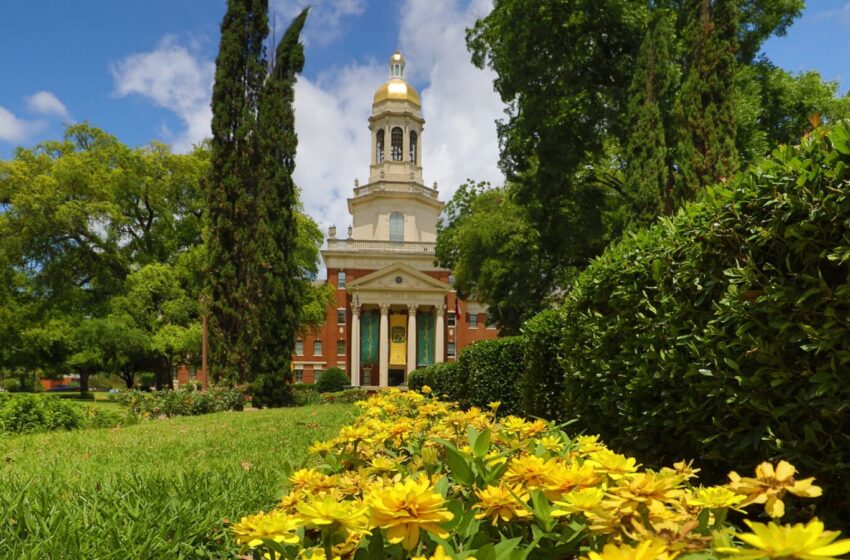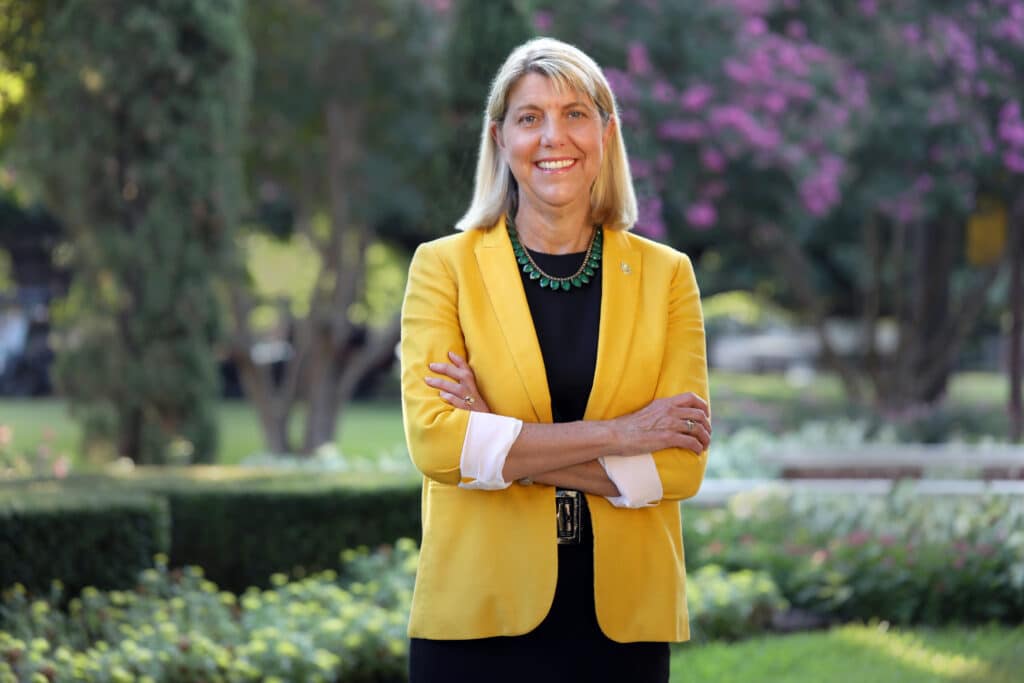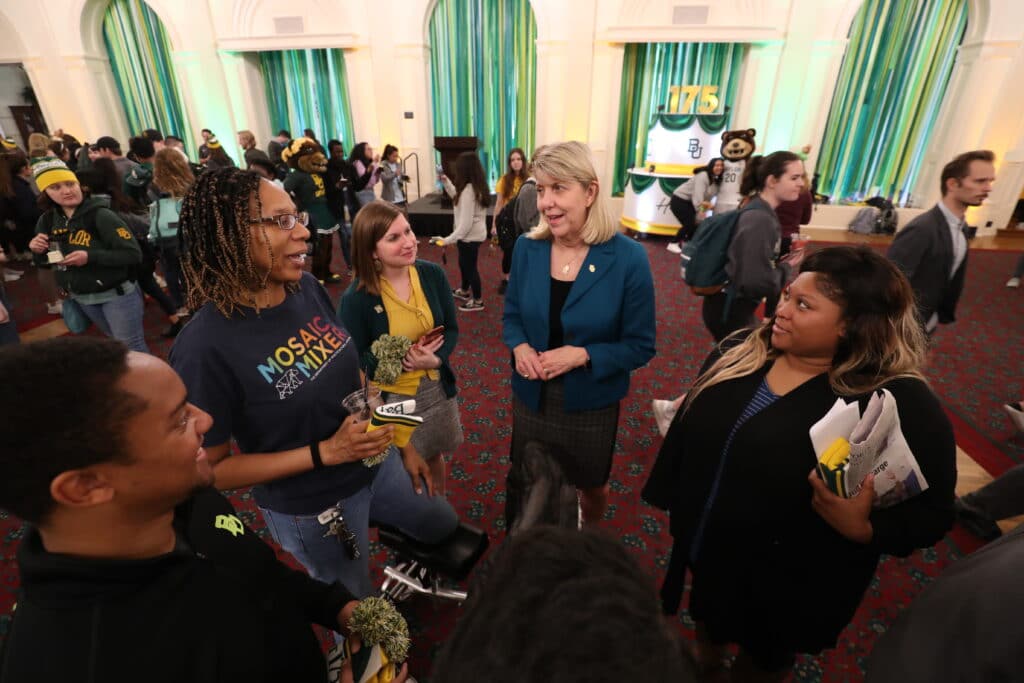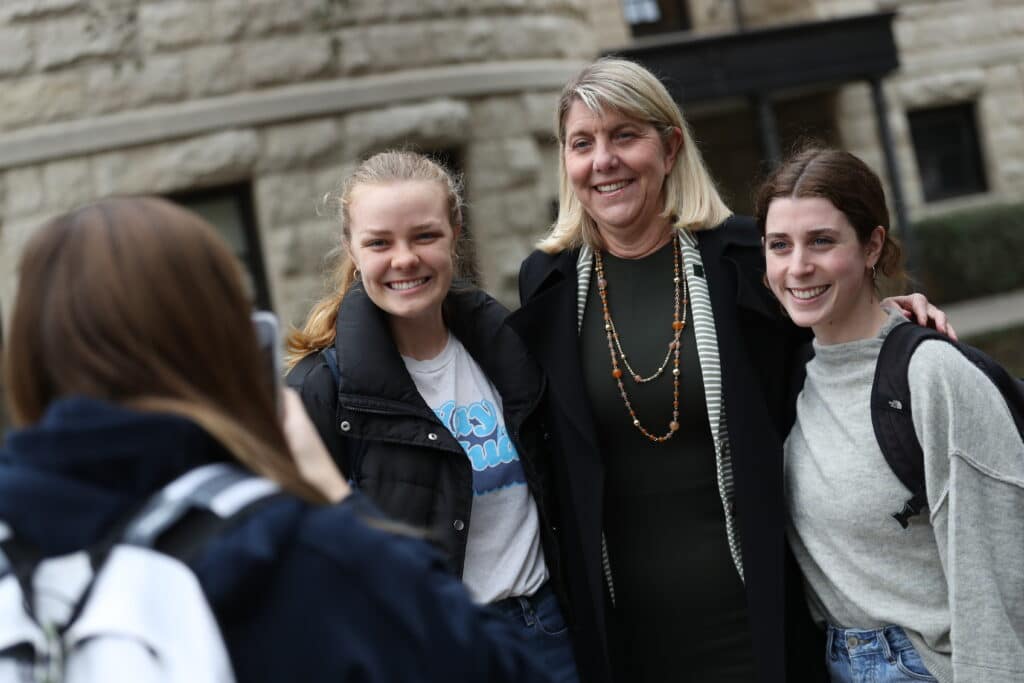Taking Baylor to Tier 1: A Conversation with Dr. Linda A. Livingstone

As the 15th president of Baylor University, Dr. Linda Livingstone is steering the institution toward some high goals. Among them is Baylor’s recognition as a Research 1/Tier 1 university. That R1/T1 status would mean that Baylor, with its committed Christian mission, would be designated by the Carnegie Classification of Institutions of Higher Education as a doctoral-granting institution with the “highest research activity.”
We caught up with Dr. Livingstone about why that goal matters. She also discusses Baylor’s economic development efforts in the Waco area and how the school—and surrounding community—has changed in the 15 years she was away.

Texas CEO Magazine: Can you tell us about the career steps that brought you to become president of Baylor University?
Dr. Livingstone: Now that’s a big question! I was at Baylor as a faculty member right out of my PhD program, from 1991 to 2002. I loved being here. I eventually left to be dean of the business school at Pepperdine and then at George Washington University. When I initially left Baylor, I thought, “Well, there might be an opportunity to come back.” But I certainly never thought it would be as president. A lot of us at Baylor talk about feeling called to come back here. When this opportunity opened up after I’d been away for 15 years, it felt like a good fit, given where Baylor was and the experiences I had while I was away. My family and I are thrilled to be back. As an institution, we’ve certainly had some interesting challenges since I’ve been back, some anticipated and some not. But we’re making great progress and loving the partnership we have with the City of Waco and McLennan County.
Texas CEO: What stands out to you as the biggest change at Baylor in the 15 years you were away?
Dr. Livingstone: When my family and I first considered coming back to Baylor, and to Waco more broadly, one of the things people told us is that people vacation in Waco now. They come to the Silos and they visit the museums and the mammoth site and so on. When we were here originally, you did not plan to vacation in Waco. The city itself had changed dramatically. Baylor itself made a tremendous effort in that time to grow the quality of its research endeavor, the size of the student body, and the quality of the educational experience. The campus had transformed physically as well, with the athletic complex along the river, the sciences building, the business school building, and several new residence halls. All of that was very attractive to us as we decided to come back to Baylor.
Texas CEO: How would you define Baylor’s role in the larger Waco community?
Dr. Livingstone: Baylor is obviously one of the largest institutions in the city, in terms of employment and as an economic driver. But we work very hard, even over the last five to 10 years, before I came, at figuring out how to work with the community more. How do we integrate ourselves into Waco, beyond employing people and spending a lot of money? We are working with the community to enhance economic development, to support the health system, to address diversity and equity issues, and to improve the educational system beyond Baylor. We view ourselves as an integrated and complementary part of the broader growth of the city.
Texas CEO: Baylor started the Solid Gold Neighbor initiative to further its community engagement. Can you tell us about that project?
Dr. Livingstone: Sure. The Solid Gold Neighbor initiative began about three years ago, when we restructured how we interact with the Waco and McLennan County communities.
The initiative really focuses on five different areas. First, economic development. How do we spur economic business growth in the community? Part of that can certainly tie to our aspiration to be a Research 1 institution. As we do more research, some of it could be commercializable. There are also educational components of economic development that we can impact as well.
The second area is strengthening local educational institutions. We certainly want to be strong, but it’s important that TSTC [Texas State Technical College] and MCC [McLennan Community College] are strong too, along with our local school systems, public and private. So we look at how Baylor can help with literacy, the college-to-career pipeline, and so on.
The third area is health. We have a huge footprint in health at Baylor. Solid Gold Neighbor asks, How do we provide more support for community health and food insecurity efforts within the community?
The fourth area the initiative looks at is cultural wealth: How do we work to create access and equity across the community, in partnership with the city and the county?
And then finally, how do we contribute to the ongoing growth and development of the community, including arts and entertainment?
So it’s a five-pronged approach that we’ve built some very specific initiatives around. We think they will make a long-term difference in Waco. I’ve been unbelievably impressed with the leadership in the city and the county and how we’ve worked together through some pretty difficult times over the last couple of years.

Texas CEO: Baylor has a primary goal of achieving R1/T1 status. Can you tell us about that journey and the progress being made?
Dr. Livingstone: Shortly after I arrived [in 2017], we worked on a new strategic plan for Baylor called Illuminate that was very aspirational. We really looked at what we wanted to be as we go forward. The university had already been on a pathway of increasing its research profile and efforts, so aiming to be R1/T1 was the next step.
Our aspiration is to be among the top-tier universities and research institutions in the country, while continuing to strengthen our unambiguously Christian mission. We want to ensure that the educational experience we provide— both undergraduate and graduate—is transformational. That’s been the core of Baylor since its founding.
We want to really grow research expenditures and our research faculty’s profile. We want to develop additional doctoral programs that enrich the undergraduate experience, and to create research that helps solve difficult problems. We’ve made progress on that in the last three years. Even in the midst of the pandemic, we’ve been unbelievably pleased to see our efforts to become a Research 1 university paying off.
Texas CEO: How will all of this impact Waco and the Texas economy at large?
Dr. Livingstone: We believe it has a huge impact. First of all, we’re putting out fabulous graduates, many of whom will stay in Texas and contribute as excellent employees in health, education, business, and so on. Second, R1 universities are great economic drivers. They produce research that solves problems, and solving problems creates opportunity to turn that research into commercializable ventures.
We believe that our growing research footprint has a multiplier effect in the community and beyond. The more R1 universities Texas has, the better it is for the state. It brings in dollars and creates intellectual property that enriches the state broadly.
Texas CEO: You were hired after a challenging time in Baylor’s history, and of course the COVID era has been difficult. What has it been like leading through those challenges?
I came in knowing about the sexual assault issues that happened before I got here, but when the pandemic hit, we had a challenge that no one had ever dealt with before.
You learn a lot dealing with these challenges. One lesson from the pandemic was knowing what you know and what you don’t know. If you need expertise you don’t currently have on your team, you need to find it. In addition to our on-campus experts in public health and communicable diseases, we’ve used outside resources that have been unbelievably valuable in addressing the pandemic.
In difficult circumstances, it’s also critical to build a leadership team that you trust and that works well together, all the way across campus. As we dealt with the sexual assault issues and the pandemic, we really integrated solutions across our campus in a collaborative way. The campus has really bought into what we’re doing. Solutions are much more effective when the broader community is involved in them.
The other thing I’ve learned through these situations is how important it is as a leader to provide hope to the community—to let people know that we are strong and resilient and will get through this. It’s about giving people hope that they will be stronger and better on the other side of it. We have learned from these experiences, and that will make us a better university.

Texas CEO: Even in 2021, there are not very many female university presidents, though there has been some progress. Can you comment on that topic?
Dr. Livingstone: It’s been great to see the growth of women in leadership at universities. Texas A&M just appointed a woman to be their new president, for example. I look at it as, Who is the right person to lead an institution at a particular time? I’m pleased to see that more and more women are moving through the ranks.
We need diversity of leadership within our institutions. I’m on a number of national boards in the education world, and I’ve seen dramatic changes in the last five to 10 years that I think will make those institutions stronger.
Texas CEO: You’ve been a businesswoman, an academic, a senior leader at multiple business schools, and now the president at a prestigious university. Do you have any go-to favorite leadership books or resources?
Dr. Livingstone: I recently read a couple of great books by Tod Bolsinger. He’s a faculty member at Fuller Seminary. The first was called Canoeing the Mountains, and it talks about how to lead when you’re facing challenges you didn’t expect—how you adapt and change in those situations. He wrote a follow-up called Tempered Resilience, about how to be a resilient leader in challenging times.
My leadership team read those books together. They have some really great leadership insights. We’re a faith-based institution, and Bolsinger writes from a faith perspective. He includes biblical insights as well as leadership and resilience insights that I find really valuable. I would certainly recommend those two to anyone.
See Baylor University’s strategic vision at baylor.edu/illuminate.






